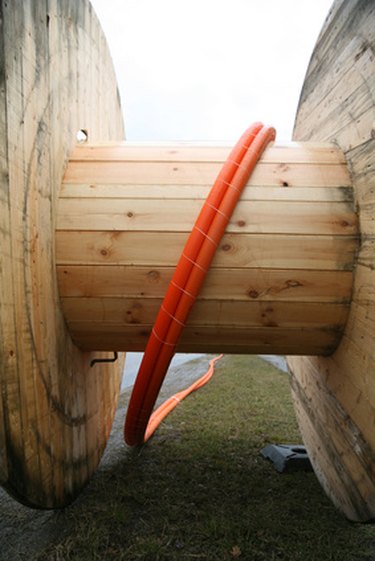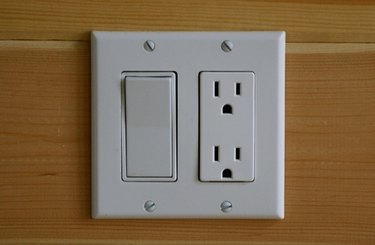Things You'll Need
Insulated electrical wire (copper conductor, minimum 12 AWG thickness; preferably three different insulator colors)
Three-prong male electrical plug
Three-prong female electrical plug
Soldering iron
Electronic (rosin core) solder
Heat-shrink tubing
Heat gun
Vinyl electrical tape

When working with electrical devices, sometimes a power cord does not reach the desired outlet. In this case, an extension cord is needed to bridge the gap between the plug and the outlet.
However, not all electrical devices can be served by just any electrical extension cord. Some electrical devices (such as power tools) have high-current requirements. To create an extension cord suitable for such devices, wire of a minimum thickness must be used.
Video of the Day
Step 1

Cut three equal lengths of wire. Strip 1/2 inch of insulation from each wire end. Attach one end of the first wire to the "hot" plug connector on the male plug, and solder the connection. Attach the other end of the first wire to the "hot" plug connector on the female plug, then solder that connection.
Step 2
Attach one end of the second wire to the "neutral" plug connector on the male plug, and solder the connection. Attach the other end of the second wire to the "neutral" plug connector on the female plug. Solder the connection.
Step 3
Attach one end of the third wire to the "ground" plug connector on the male plug, then solder the connection. Attach the other end of the third wire to the "ground" plug connector on the female plug, and solder that connection. Wrap the three wires together with electrical tape. Slip the heat-shrink tubing over the soldered connections, then apply heat with the heat gun until the heat-shrink tubing molds itself over the connections.
Video of the Day